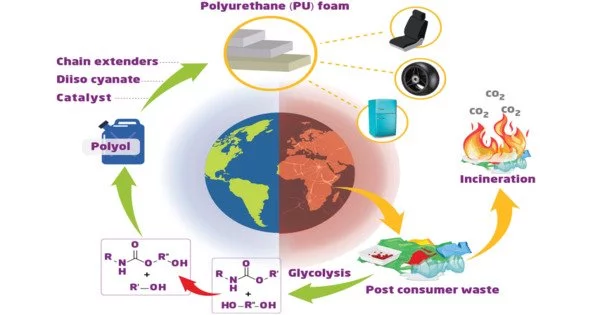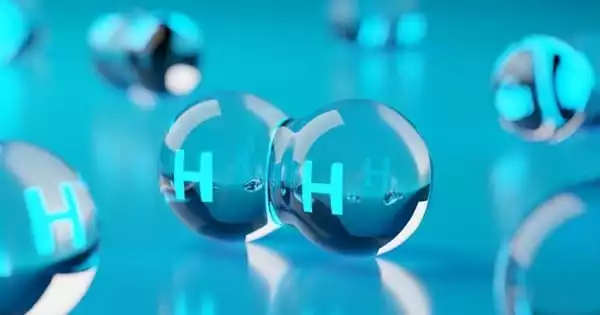The Earth’s resources are limited, and it is critical that we only take what we need and do our part to protect what is left for future generations. Polyurethanes play an important role in preserving our planet’s natural resources. Durable polyurethane coatings extend the lifespan of many products far beyond what would be possible without the coating. Polyurethanes aid in the long-term conservation of energy.
A team of researchers from the Center for Education and Research on Macromolecules (CERM) at the University of Liège (Belgium) has developed an innovative process that rethinks the manufacturing of polyurethane (PU) foams without the use of isocyanates—highly toxic agents—while remaining recyclable. This research was published in the journal Angewandte Chemie International Edition.
Polyurethane (PU) foams are essential products in our daily lives, and they are available in rigid and flexible forms. Rigid PU foams have played a significant role in energy savings for decades when used as the most efficient insulating panels in the construction sector (e.g., floor, wall, and roof insulation in buildings) or in household items such as refrigerators (walls and doors). Flexible PU foams are used as comfort materials, such as mattresses, sofas, armchairs, and car seats, but they are also used for sound insulation and shock absorption.
We succeeded in mimicking the foaming technology of conventional polyurethanes by replacing toxic isocyanates with easily accessible cyclic carbonate compounds.
Maxime Bourguignon
Although inexpensive, these materials are prepared from toxic compounds and are difficult to recycle. “PU foams are prepared from isocyanates, which are highly reactive and toxic chemical substances,” explains Christophe Detrembleur, FNRS Research Director at the Center for Education and Research on Macromolecules (CERM) within the CESAM research unit at the University of Liège.
Replacing this old chemistry with a more environmentally and health-friendly one, while valorizing an iconic waste (CO2) as a raw material, has become a priority for the production of more environmentally and recyclable cellular materials.
The manufacturing of PU foams must also change due to regulatory changes restricting the use of isocyanates. Researchers at the University of Liège have developed a new process for producing isocyanate-free and recyclable polyurethane (NIPU) foams using water as the blowing agent, which could be compatible with existing industrial foaming infrastructures.

“We succeeded in mimicking the foaming technology of conventional polyurethanes by replacing toxic isocyanates with easily accessible cyclic carbonate compounds,” says Maxime Bourguignon, a researcher in the lab and the article’s first author.
“Water and a catalyst are used in our technology to convert part of the cyclic carbonates into a gas (CO2) that blows the matrix while the other part reacts with amines to cure the foam. As a result, a solid material with a low density and regular pores is produced. Our cyclic carbonates are easily obtained through the chemical transformation of CO2 and thus serve a dual purpose, generating the blowing agent while also forming the polymer matrix, the polyurethane.”
The simplicity, modularity, and ease of implementation of the technology, combined with the use of low-cost and widely available starting products, provides a new impetus for the next generation of more sustainable PU foams. Production is expected to eventually respond not only to legislative changes imposed on the chemistry sector, but also to societal needs and sustainability requirements that are critical for many sectors.
Polyurethanes enable automakers to design more appealing vehicles and build lighter frames, resulting in lower fuel consumption and emissions. Furthermore, the use of polyurethane foams to insulate refrigerators means that food is preserved longer, reducing waste.
















